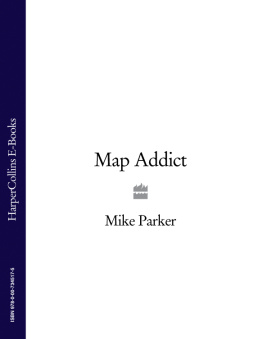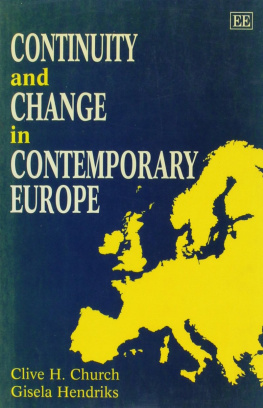

First published in Great Britain in 2015 by
Policy Press University of Bristol 1-9 Old Park Hill Bristol BS2 8BB UK Tel +44 (0)117 954 5940 e-mail
North American office: Policy Press c/o The University of Chicago Press 1427 East 60th Street Chicago, IL 60637, USA t: +1 773 702 7700 f: +1 773-702-9756
Policy Press 2015
British Library Cataloguing in Publication Data
A catalogue record for this book is available from the British Library
Library of Congress Cataloging-in-Publication Data
A catalog record for this book has been requested
ISBN 978-1-4473-2222-1 Hardcover
ISBN 978-1-4473-3442-2 ePub
ISBN 978-1-4473-3443-9 Mobi
The right of Roy Parker to be identified as author of this work has been asserted by him in accordance with the Copyright, Designs and Patents Act 1988.
All rights reserved: no part of this publication may be reproduced, stored in a retrieval system, or transmitted in any form or by any means, electronic, mechanical, photocopying, recording, or otherwise without the prior permission of Policy Press.
The statements and opinions contained within this publication are solely those of the author and not of the University of Bristol or Policy Press. The University of Bristol and Policy Press disclaim responsibility for any injury to persons or property resulting from any material published in this publication.
Policy Press works to counter discrimination on grounds of gender, race,
disability, age and sexuality.
Cover design by Policy Press
Front cover image kindly supplied by London Metropolitan Archives
Readers Guide
This book has been optimised for PDA.
Tables may have been presented to accommodate this devices limitations.
Image presentation is limited by this devices limitations.
The Hope is in Children
( The Times , 6 July 1908)
We are the architects of our childrens opportunities
(Geoffrey Vickers, The Art of Judgement )
A books cover illustration is important. Ideally it should capture the essence of what is to follow. Yet a single picture can hardly be expected to meet that requirement and that is particularly the case when, as here, the book deals with developments over many years. Furthermore, the childrens services are experienced by those involved as a series of events that not even film is capable of portraying. However, in the early years, when so many of the services relied upon institutions, it was easy to show the buildings, albeit with children in and around them, and believe that that conveyed what was going on; but, of course, it couldnt and didnt. With the dramatic decline in residential care even that illustrative option is closed off.
The visual image is a powerful means of communicating certain ideas and certain realities and can have a forceful political impact. But just how can one illustrate todays childrens services when so much occurs in relationships upon which it is both difficult and, indeed, inappropriate to encroach? In what way, for example, might preventive work with families be illustrated? In the first place it is no single thing and, in the second it is a dynamic process. The documentary film might go some way to show what goes on; but that will hardly do when it comes to book illustrations.
Faced with such problems it is tempting to settle for a cover illustration that serves to catch the potential buyers eye; but that offers no message relevant to the ensuing content. So, a word is necessary to explain my selection of this books cover design. I chose it because I felt that it was ambiguous. Whats happening? Who are the children? Are they brothers and sisters? Where are they going to or coming from? And who is the woman? Is she their mother, a foster mother, a teacher, a social worker, a neighbour or their grandmother? With their backs to the camera some of the usual clues are lost. In short, the picture is ambiguous: it poses unanswered questions. And that, it seems to me, typifies the history of our childrens services. There is never enough information. Guesses have to be made. Uncertainties abound for all who are involved.
Contents
Acknowledgements are always difficult to record. My involvement in child care (now childrens services) goes back over 50 years and during those years I have had the most generous colleagues, students and friends that one could want. All of them, in different ways, have contributed greatly to my education and understanding. I apologise for not naming you all, but I hope that you will know who you are and accept my gratitude.
Nonetheless, several of you have helped me in composing and improving the essays in this book and I would like to acknowledge your contributions: thanks to Dr Nick Axford, Professor Roger Bullock, Dr Bob Holman, Dr Michael Little and the late Professor John Triseliotis.
I have also had the good fortune to enjoy the generous help of the Dartington Social Research Unit, where special thanks go to Kay Turner, Fiona Mowbray and Julian Addy. I have also benefited from the stimulating meetings of the Centre for Social Policy and the friendship of its many members.
Some of the essays that follow have been published earlier although most of these have been revised, enlarged and brought more up to date. Even so, I wish to thank Barnardos, the British Association for Adoption and Fostering, Children in Scotland, the Journal of Childrens Services , Research in Practice and Wiley for their permissions to reproduce all or part of the articles or chapters in question.
The London Metropolitan Archives gave permission to reproduce the cover photograph.
Last, but certainly not least, I wish to thank Jo, my wife of 60 years, whose unstinting help and great patience have provided indispensible support.
The subject of these essays should not need to be explained, but it does. For many years that subject was called the child care services or, more often, just child care. It covered those provisions that were made for the care and protection of children whose parents were unable to look after them or who were judged unfit to do so. Those who were familiar with these services understood what child care meant; but for others there was some confusion. Did it include day care and nursery schools? And what about childminders? Or grandparents who looked after their grandchildren? In any case, caring for children was what parents did, wasnt it? Further complications arose from the use of the overlapping but more comprehensive term child welfare.
Within the last decade, however, what were referred to as the child care services have come to be called the childrens services, partly as a result of the Children Act 2004 which, among other things, required directors of childrens services to be appointed to be responsible for the education as well as the child care functions of local authorities. Put simply then, these essays are about what are now called the childrens services but also about what was called child care. Hence the reader will find both terms being used, but in their appropriate historical settings.
More specifically, the essays are about the political economy within which these services have been and are located. By political economy I mean the political and economic influences to which they have been exposed and which have formed the contexts within which they have evolved. It follows that the thrust of the essays is towards an historical appreciation of how and why policies and services for some of societys most vulnerable children assumed the character that they have and, indeed, how both the problems and remedies came to be seen at different times. However, as the books title implies it is not solely devoted to accounting for the changes and developments that have occurred. It also identifies and explains some of the persistent continuities.




















